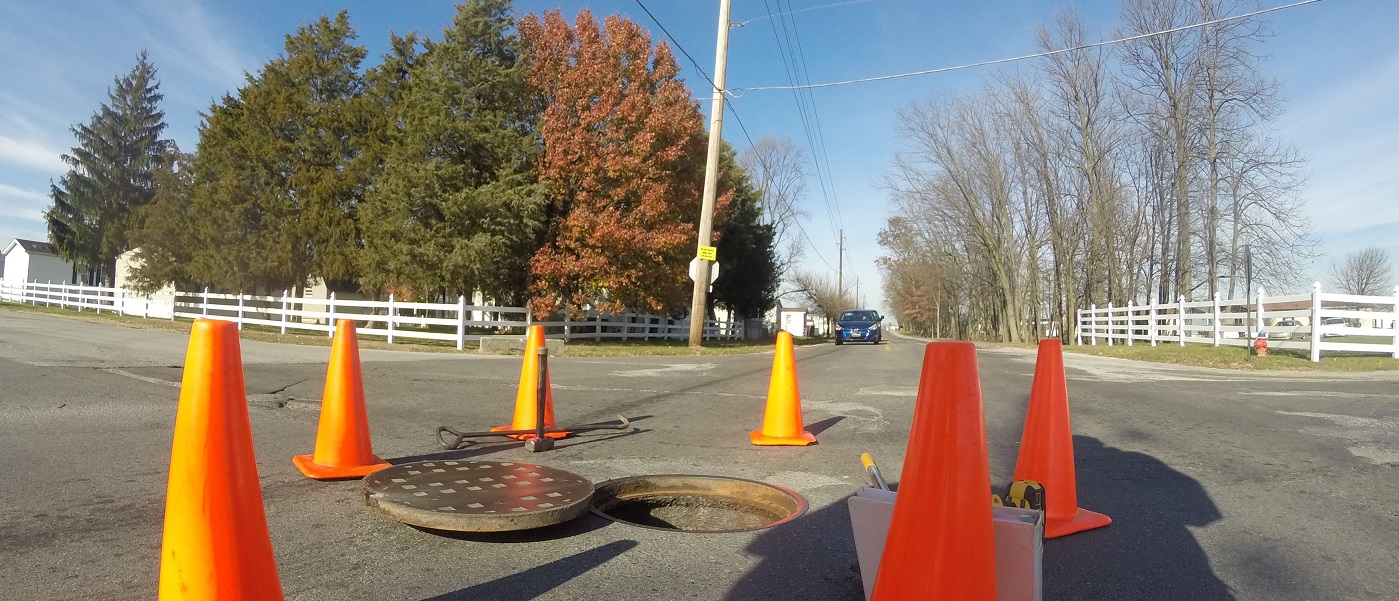The Wessler Engineering team partnered with Citizens Energy Group (CEG) of Westfield to conduct a field survey of sanitary and combined sewer collection system manholes throughout the CEG Westfield sewer system using GPS survey equipment.
The project included:
- upstream and downstream pipe invert
- upstream and downstream diameter and material
- manhole depth
- measured rim above grade.
Manhole inspections typically are performed during wet weather or when the groundwater level is at its peak, with November to May being the best time to detect inflow and infiltration (I/I). With snow and ice melting in February and March compounded with heavy rains, the system might experience a spike in flow at lift stations and wastewater treatment facilities.
There are five important items to include in manhole inspections:
- manhole chimneys
- manholes struck during final grading and never corrected by the utility
- manholes not properly stacked out allowing I/I to enter the system
- leaking pipe penetration obstructions in the sanitary sewer system.
- manhole chimney during heavy rain: manhole chimneys constructed with brick can appear to be in good condition in dry weather. During wet weather, the I/I can be observed.
- manholes struck during final grading: sometimes frame and covers are offset due to manholes being struck when they originally were installed and never fixed. If these manholes are in low lying areas, they can take on heavy wet weather flows.
- It is always a good idea to have a trained construction inspector on site during sanitary manhole installations and to have the inspector complete and sign off prior to municipal or utility staff taking responsibility for the sewer system. After construction, there is typically a three-year maintenance bond and inspection that should take place, but this is often times forgotten.
- manholes improperly stacked out: often, sanitary sewer manholes are not properly stacked out during construction that results in I/I entering the system. A specific example is the use of brick or stone for a grade adjustment instead of the proper concrete adjusting ring being used to maintain a water-tight seal at the joint. Plan details and specifications need to be adhered to for a quality final product.
- rubber boot: when a new manhole is constructed, a rubber boot should be installed on the precast manhole to facilitate installation of the sewer pipe. This boot is tightened with stainless steel bands to maintain a water-tight seal. Many times, concrete is placed around the pipe in lieu of the rubber boot and the result is active infiltration at the pipe penetration.
- surcharging left an obstruction: inspecting the sanitary sewer system after a heavy rain is important to see if surcharging (overload from infiltration) has occurred. Surcharging can indicate an obstruction in the sewer pipe that needs to be removed.
Read More


